MARPOL Annex 1 Explained: How To Prevent Pollution From Oil At Sea
The prevention of oil spillage from ships and to keep the sea safer from oil pollution is mainly the responsibility of the ship’s crew. Oil from the vessels can get into the sea due to accidental spills and leakages or by the operational ignorance of the ship’s crew.
Important Guides For Mariners (Up to 50% OFF):
When the oil gets into the water, it spreads quickly over the surface of the water, and the intensity of pollution depends on the relative density and composition of the oil. The results can be disastrous as oil sheen on water has a significant impact on sea animals and humans. Any oil spill not only affects the current marine environment but also impacts the marine species and coastal organic substrate.
The immediate effects of toxic and smothering oil waste may be mass mortality and contamination of fishes and other food species, but long-term ecological impacts may be worse.
Oil waste poisons the sensitive marine and coastal organic substrate, interrupting the food chain on which fish and sea creatures depend, and on which, their reproductive success is based. Commercial fishing enterprises may also be affected permanently.
Related Read: 11 Major Oil Spills Of The Maritime World
The occurrence of oil spill incidents at sea has drastically reduced in recent years; however, it cannot be permanently eliminated.
The affirmed objective of MARPOL Annex 1, which entered into force on 2nd October 1983, is to protect the marine environment through the complete elimination of pollution by oil and other damaging elements and to lessen the chances of accidental discharge of any such elements.
Related Read: MARPOL ANNEX 4 Explained
Defining Oil Spill At Sea
The term “Oil” can be defined as a viscous fluid containing petroleum which can be in the form of crude oil, heavy fuel oil, sludge, oil refuse and refined products like MGO (other than those petrochemicals which are subjected to the provisions of annex2 of the present convention), etc.
As per this Annex, all ballast water and tank washing residue originating from the washing of cargo tanks in the tanker ships are also included.
MARPOL Annex 1 covers all the fluids which contain oil and can be discharged overboard at sea. Even the OWS treated discharge water is also a part of this annex. Under the MARPOL Annex 1, the following equipment should be in good working condition, adequately calibrated, maintained and fully functional with appropriate spares present onboard at all times-
All ships:
1. Oil filtering equipment.
2. 15 PPM alarm arrangements.
3. Standard discharge connection.
Related Read: What is International Shore Connection?
Tanker specific:
1. Oil/ water interface detector
2. Crude oil washing system, if fitted
3. Oil discharge monitoring and control
4. Cargo and ballast pumping, piping and discharge arrangements.
5. Engine room/ bilge holding tank to slop tank pumping and piping arrangement.
Related Read: A Detailed Explanation on How to Operate a Ship’s Ballast System
Special areas under MARPOL Annex 1:
1. The Mediterranean Sea.
2. Baltic Sea.
3. The Black Sea.
4. The Red Sea.
5. “Gulfs” area.
6. The Gulf of Aden.
7. Antarctic sea.
8. North West European waters.
9. Oman area of the Arabian Sea.
10. Southern South African waters.
Related Read: FAQs: Sulphur Limits In Emission Control Areas
Control of Discharge of Oil under MARPOL Annex 1 Regulation 4
Under this regulation, any discharge of oil or oily mixture generating from the ship’s engine room or cargo spaces of tanker ship is prohibited, except when they fulfil the following stated criteria –
All ship’s of 400GT (Other than oil tankers) and above sailing outside the special areas, the discharge from the machinery spaces, is permitted if:
1. The ship is en route
2 Only treated oil-water mixture which is processed through an approved oil filtering equipment fulfilling the requirement stated in regulation 14 is used to discharge the treated effluent mixture
3 The oil PPM in the treated effluent without dilution must not exceed 15 parts per million
4 The oily mixture being treated in the oil filtering equipment is only taken from the engine room and not generating from cargo holds
5 The oily mixture is not mixed with fuel tanks or cargo tanks oil residues
4. The ship is more than 12 nautical miles from the nearest land
Discharges in special areas
For this ships of 400GT and above (Other than oil tankers), any discharge of oil or oily mixture out at sea is forbidden, except when all the following requirements are fulfilled:
1 the ship is proceeding en route;
2. Only treated oil-water mixture which is processed through an approved oil filtering equipment fulfilling the condition stated in regulation 14 is used to discharge the treated effluent mixture
3 The oil PPM in the treated effluent without dilution must not exceed 15 parts per million
4. In the special area of the Antarctic, any discharge into the sea of oil. Oil effluent or oily mixtures from the ship shall be prohibited.
Related Read: 7 Ways For Ships To Meet MARPOL NOx Tier III Regulation
Discharge from the Cargo Area of an Oil tanker (which includes cargo tanks, pump rooms, machinery space, bilges mixed with cargo oil residue, etc.) –
- The tanker ship is not inside a Special Area;
- The tanker ship should be more than 50 nautical miles from the closest proximal land;
- The tanker ship is moving en route;
- The instantaneous rate of discharge of oil content does not exceed 30 litres per nautical mile
- The total quantity of oil discharged into the sea does not exceed for existing tankers (delivered on or before 31 December 1979 ) 1/15000 of the total amount of the particular cargo of which the residue formed a part, and for new tankers (delivered after 31 December 1979 ) 1/30000 of the total quantity of the specific cargo of which the residue formed a part;
- The tanker has in operational oil discharge monitoring and control system and a slop tank arrangement.
Discharge In Special Areas From Oil Tankers
Any oily mixture or oil effluent discharge from the cargo area of an oil tanker into the sea which comes under special area shall be prohibited.
The prerequisites of this regulation shall not affect the discharge of clean or segregated ballast tank.
In respect of the special area of Antarctica, any discharge into the sea of oily or mixtures from any ships shall be prohibited.
Related Read: Understanding Design Of Oil Tanker Ships
Survey under Marpol Annex 1
Every ship with 400GT and above and all tanker ships of 150GT and above must be subjected to following surveys:
1. Initial Survey: This survey is performed before the ship is set in service. In this survey all equipment, machinery, systems, fittings etc. are inspected which are covered under Annex 1.
2. Annual Survey: The Annual survey is performed every year taking a buffer of 3 months prior and after the anniversary date of the IOPP certificate issued.
3. Intermediate Survey: An intermediate survey takes place in a buffer of 3 months before or after the second-anniversary date or within 3 months before or after the third anniversary date of the Certificate replacing one of the annual surveys.
4. Renewal Survey: The Renewal survey is done on or before 5 year period of the certificate expiry date and in this survey as detailed inspection of all equipment, material, machinery, fitting etc. which comes under Annex 1 are done.
5. Additional Survey: If there is significant repair and renewals are done on any of the machinery, system, fittings which comes under MARPOL Annex 1, an additional survey is performed which can be general or partial, depending upon the conditions.
6. Condition Assessment Scheme: The CAS is done to confirm that the structural strength oil tankers with the single hull are acceptable under the periodical surveys as indicated in the Statement of Compliance. The First CAS survey is usually done in parallel to the first intermediate or renewal survey after 5 April 2005 or once the ship completes 15 years of age, whichever occurs later.
Certificates, plans, and paperwork under MARPOL Annex 1:
International Oil Pollution Prevention Certificate (IOPP)
International Oil Pollution Prevention certificate is issued towards the initial or renewal survey which states that the ship equipment, system, fittings, machinery, etc. coming under MARPOL Annex 1 is compliant with the regulation. The validity of this certificate should not be more than 5 years. The administration may decide to issue the certificate for a period of fewer than 5 years, depending upon several conditions.
If the certificate is on the verge of expiring, and ship is still out at sea engaged in a voyage, the administration may extend the certificate validity so that ship can complete the voyage and come to a port where the survey can be done for renewing the certificate, however, the extension period should not be more than 3 months.
The Validity the Certificate may expire in the following conditions:
1. Relevant surveys not carried out under a specified period as stated in the Annex.
2. If the endorsement is not done as per the requirement of this Annex
3. If there is a change of flag for the ship to another flag state.
Oil Record Book
Oil Record books are the important document which needs to be carried onboard ship under MARPOL Annex 1 on vessels of 400 gross tonnage and above, other than oil tanker, and oil tanker ship of 150GT and above.
The ORB part 1 is provided in all ships, other than oil tanker, of 400GT and oil tanker ships of 150GT and above must be provided with Oil Record Book Part 1 and Part II (for cargo/ballast operations).
The ORBs contains the following necessary information:
- Name and IMO Number of the ship
- Gross Tonnage of the ship
- Owner’s Details
- Official Number
- Period of usage
Related Read: The Most Important Engine Room Documents a Ship Cannot Sail Without
ORB Part 1
Oil Record Book Part 1 must be carried by All Ships and it should contain the following records:
- All the operations involving oil and oily mixtures
- Dates, geographical position, quantity, tank identification, and duration of operation entered
- Ballasting and cleaning of fuel oil tanks
– Discharge of dirty ballast or cleaning water from oil fuel tanks
– Disposal of oil residues (sludge)
– Non-automatic discharge overboard or disposal otherwise, of bilge water accumulated in machinery spaces - Automatic discharge overboard or disposal otherwise, of bilge water, collected in machinery spaces (e.g. transfer of bilge water to slop tank) (Identify tank)
- Conditions of ODM and Control System
- Accidental or other exceptional discharge of oil
- Bunkering of fuel or bulk of LO
- Additional operational procedures and general remarks
- Port State Authority may take copies of entries, and if so requested, the master is required to state that it is a true copy.
- ORB retained onboard for 3 years after the date of last entry.
Oil Record Book ( Part II), For Oil Tanker
In addition to ORB Part 1, the oil tanker ship of 150GT and above needs to additionally carry ORB part II which records the oil-related activities from cargo and ballast spaces. It should contain the following records:
- Loading and unloading of oil cargo.
- Internal transfer of oil cargo during the voyage.
- Cleaning of cargo tanks.
- Crude Oil Washing(COW System only)
- Ballasting of cargo tanks
- Ballasting of Segregated Clean Ballast Tanks. (CBT Tanker only)
- Discharge of dirty ballast
- Discharge of clean ballast from the cargo tanks
- Discharge of ballast from Segregated CBTs (CBT Tankers only)
- Discharge of water from the slop tanks into the sea
- Condition of ODM and ControlSystem
- Accidental or other exceptional discharge of oil
- Additional operational procedures and general remarks
- Loading of ballast water. (Tankers engaged in specific trades)
- Location of ballast water within the ship
- Ballast water discharged to reception facilities
Related Read: 20 Hazards On Oil Tanker Ship Every Seafarer Must Know
SOPEP – Shipboard oil pollution emergency plan
SOPEP is a vital prevention plan which should be available onboard all ships of 400GT and above and on all oil tankers of 150GT and above. The complete details of SOPEP are provided here.
In addition to SOPEP, all oil tankers with 5,000 tons deadweight or more must have quick access to coast established computerized damage stability and residual structural strength calculation programs.
Other essential requirements of MARPOL ANNEX 1
Fuel Oil Tank Protection:
All ships which are delivered after 1 August 2010, having a fuel oil capacity of 600m3 and more must comply with the following regulations:
– Individual fuel oil tank should not have a capacity of more than 2500m3
– Those ships which have a fuel tank capacity more than 600m3 but less than 5000m3, the fuel oil tank location should be inboard of the moulded line of side shell plating, not less than w described by the following formula -w= 0.4+2.4X C/20000. ( the minimum value of w = 1.0m)
– Ships having total fuel oil tank capacity of 5000m3 and above, the fuel oil tank location should be inboard of the moulded line of side shell plating, not less than w described by the following formula – w = 0.5+C/20000 or w= 2.0 m whichever is lesser ( the minimum value of w = 1.0m)
Here C is total fuel oil volume.
Pump Room Protection:
The pump room, which is an essential part of an oil tanker ship, is located at the bottom part of the vessel. It is provided with a double bottom, and it should be such that the distance between the bottom of the pump room and ship’s baseline (indicated as L), when measured perpendicular, should not be less than L = B/15 or 2m whichever is lesser.
Here B is the breadth of the ship.
Equipment under MARPOL Annex 1:
Oily water separator:
This is the equipment specific to the marine industry which is used to separate the oil from water. It only allows effluent of less than 15ppm to get discharged out at sea. Read more about OWS here.
FREE eBOOK – A Guide to A Guide to Effective & Efficient Operating Oily Water Operation of Separator on Ships
ODMCS
This system is used on tanker ship to discharged effluent generated from cargo and ballast tanks. This is not a filtration unit, and it only monitors the content and allows it to go overboard only when the ppm content is satisfactory. Read more about ODMCS here.
Other Pollution Prevention Equipment and tools:
The SOPEP locker of the ship contains different pollution prevention tools, chemicals, and equipment which can be used for onboard oil pollution to restrict the oil from going out at sea and also for oil spill pollution to prevent spreading of it.
Crew’s duty on the ship about MARPOL Annex 1:
The ship’s crew plays the most vital role in implementing the MARPOL Annex 1 on ships. Following are the duties of the ship’s crew to keep check of this Annex:
– Maintain OWS, ODMCS and other MARPOL Annex 1 equipment in good running conditions
– Handle all oil transfer (internal and external) carefully to prevent any oil spill
– Bunkering operation to be carried out after complete preparation
– All the records of the oil transfer, sludge, bilge, tank washing, etc. to be maintained in the appropriate log books and oil record books
– Master should carry out regular pollution prevention training and drills onboard
– Every crew must be familiarised with the SOPEP locker and other pollution prevention equipment onboard ships
– The Ship’s officer must know how to fill the Appropriate oil record books
– The master and chief engineer must check the entries for there accuracy and countersign the ORBs
– The crew must try all the means to restrict any oil going overboard. If the ship is involved in an accident, the ship’s crew must try to minimize the oil flow out to the sea if the ship is still safe to sail.
– Any accidental oil spill must immediately be informed to the shore administration
Related Read: Actions to be Taken by the Master and Parties Involved in Case of Collision of Ships in Indian Waters
Role of Port State Control (PSC)
The main aim of any Port state control inspection is to find a deficiency in the vessel when they visit their port so that it can be rectified and the ship is safe when out at sea.
Under MARPOL Annex 1, following equipment, systems and logs are usually checked by the PSC inspector:
– The Oil record book is checked for different entries
– The sounding log book is checked, and PSC inspector may ask to take actual sounding for cross-checking the quantities
– The engine room bilges for oil content
– Leakages in the machinery which may contribute to oily bilges
– The discharge pipe of the OWS (before the overboard valve) can be opened and checked for oily layer, which indicates the OWS is not performing as per the standards
– The operational log of the oil content meter
– The validity of the IOPP certificate
– The seals on the OWS discharge valve and ODMCS discharge valve
– The PSC inspector may randomly pick a crew and ask questions on oil spill drill or SOPEP locker location to check the practical knowledge and familiarisation of the crew regarding his/her ship
Related Read: 40 Ship Certificates and Documents that are Checked in a Port State Control (PSC) Survey
MAPROL Annex 1 is one of the first Annexes which came into force to prevent Marine Pollution. It also includes port reception facilities and their requirements so that ship can dispose of sludge and bilges which cannot be treated and discharged overboard.
Disclaimer: The authors’ views expressed in this article do not necessarily reflect the views of Marine Insight. Data and charts, if used, in the article have been sourced from available information and have not been authenticated by any statutory authority. The author and Marine Insight do not claim it to be accurate nor accept any responsibility for the same. The views constitute only the opinions and do not constitute any guidelines or recommendation on any course of action to be followed by the reader.
The article or images cannot be reproduced, copied, shared or used in any form without the permission of the author and Marine Insight.

About Author
Raunek Kantharia is a marine engineer turned maritime writer and entrepreneur. After a brief stint at the sea, he founded Marine Insight in 2010. Apart from managing Marine Insight, he also writes for a number of maritime magazines and websites.
Do you have info to share with us ? Suggest a correction
Latest Maritime law Articles You Would Like:
Latest News
- What are Logistics Risks?
- How Port and Terminal Operators Can Control Emissions?
- Minimum Quantity Commitment (MQC) and Liquidated Damages in Container Shipping: Concept and Relevance
- MARPOL (The International Convention for Prevention of Marine Pollution For Ships): The Ultimate Guide
- The Ultimate Shipping Container Dimensions Guide
- A Comprehensive Overview of IMDG Code for Shipping Dangerous Goods
Subscribe To Our Newsletters
By subscribing, you agree to our Privacy Policy and may receive occasional deal communications; you can unsubscribe anytime.
Web Stories




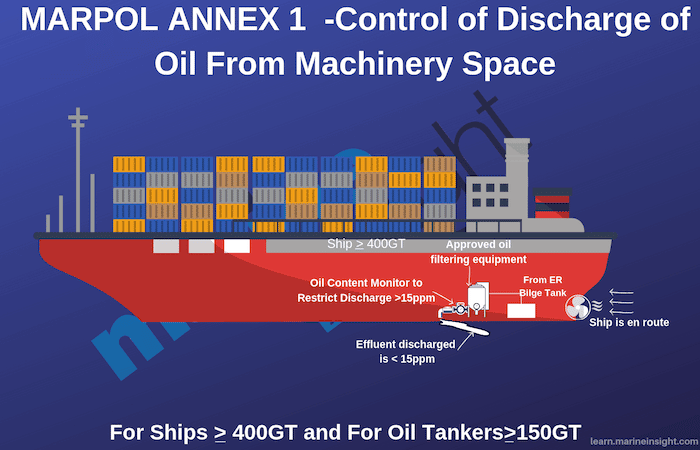
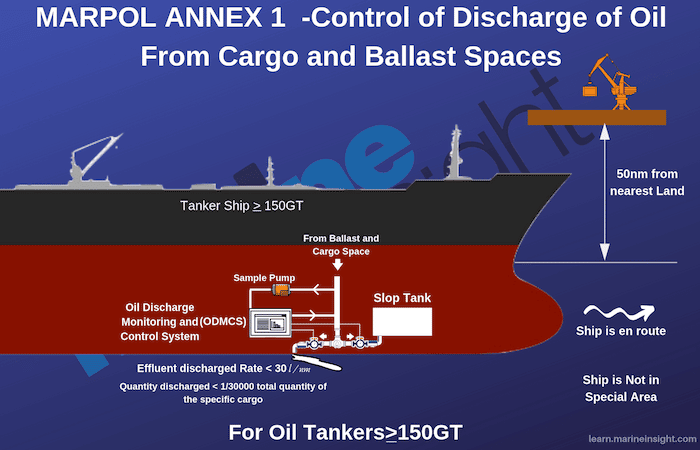
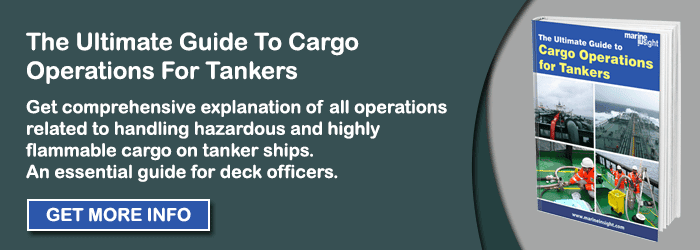
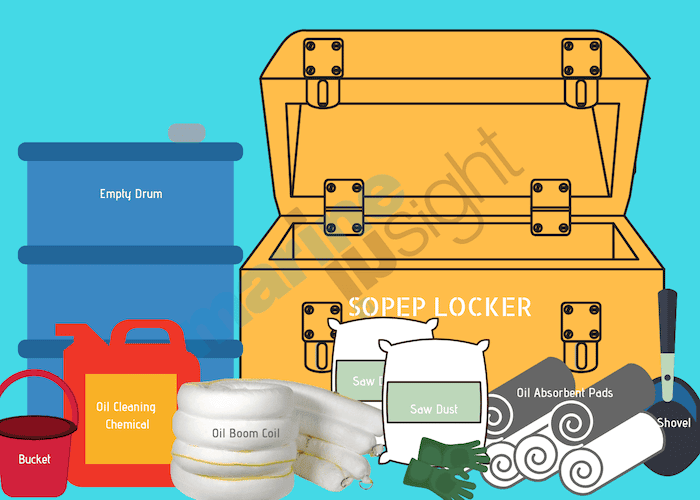





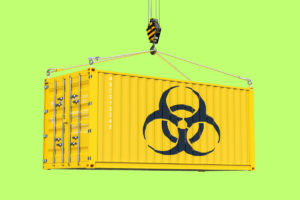






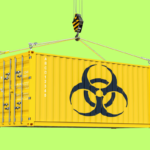





So nice to finally have this platform to get all the answers regarding mates and class exams. Thanks a lot for building it up. Keep the good work going. Cheers.
Thank you for the information.. I take it for my project modular’s answer and its work! Thank you very much!
@Danial: Glad the information is useful for your project. Thank you for commenting. ????????
Hi
I was trying to download the free ebooks but the webiste is cannot be reached.
Please help.
Thanks,
Danna
this website is such a great help. 🙂
i learned a lot from it.
being in a maritime and working in the maritime industry this site is great help specially to the students who wanted to learn more about their chosen field we learned a lot.
@Danna: Can you let us know or share the screenshot of the issue to help you better. Please send it to – info@marineinsight.com
RSV type 4 vessel iopp rules and regulations??
Have some doubts about discharge criteria for outside special area. I don’t think that there is any requirement regarding 12 miles distance from land. Can you please confirm?
I am a oil tanker port agent in Brazil. And I am learning too much with your writings.
Tks so much for sharing. Knowledge is the key for a better world and you are helping for that.
Bregards,
Leonardo